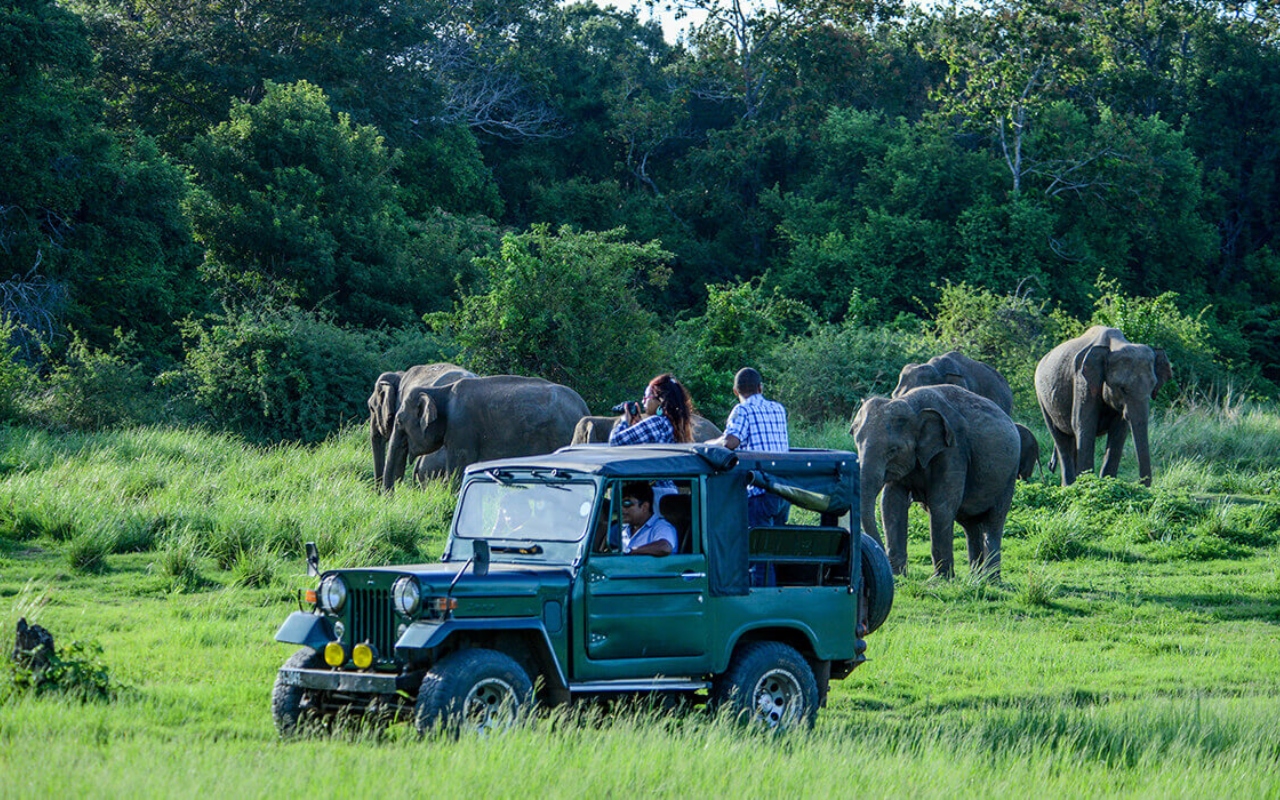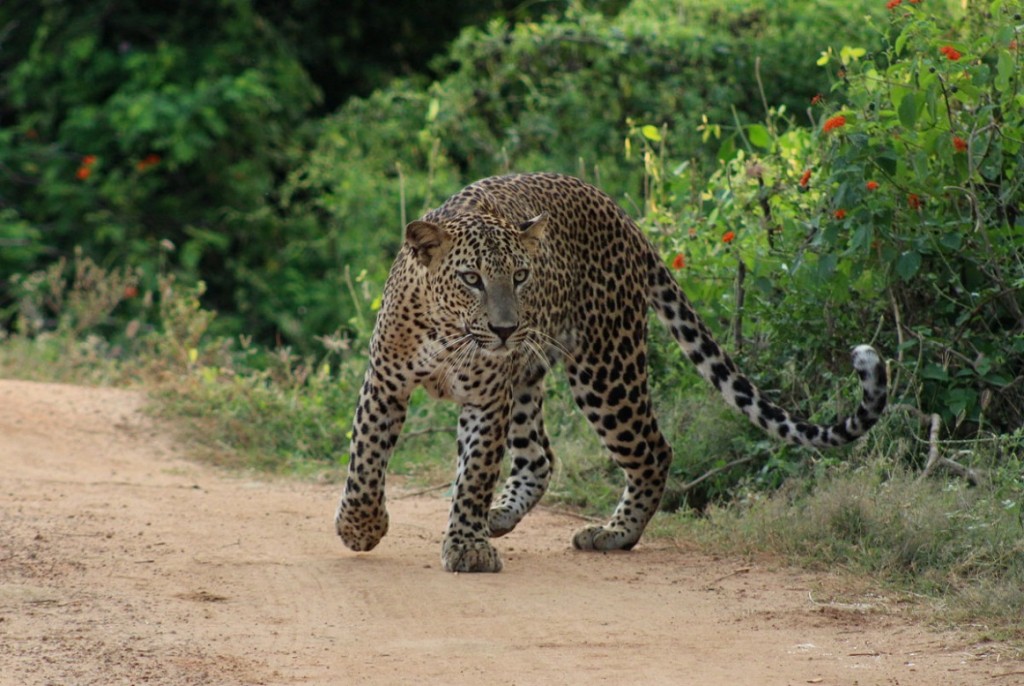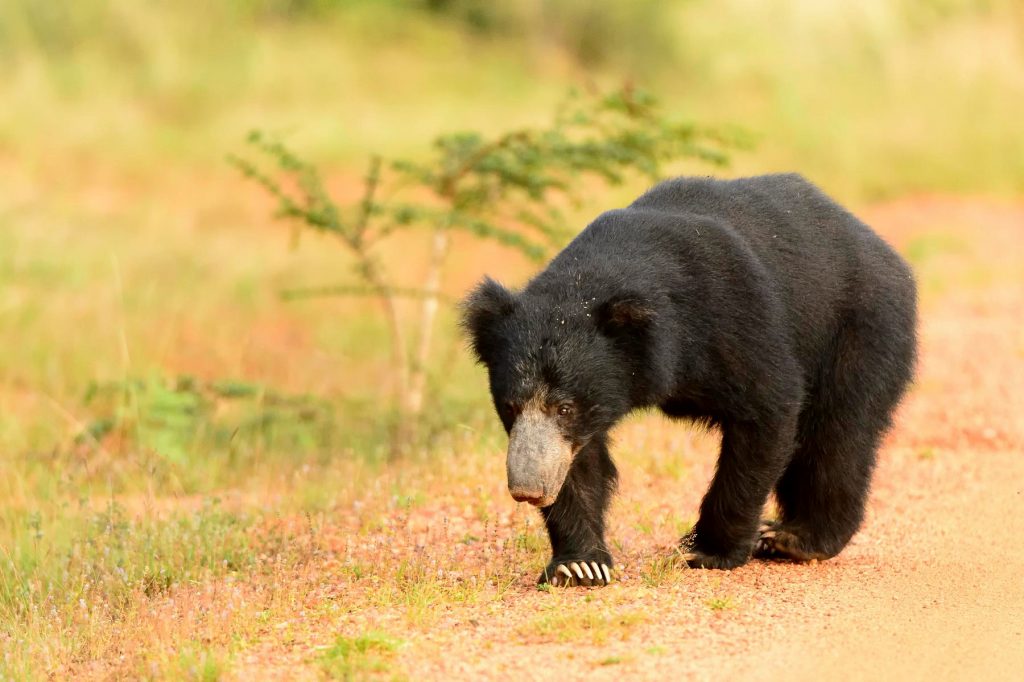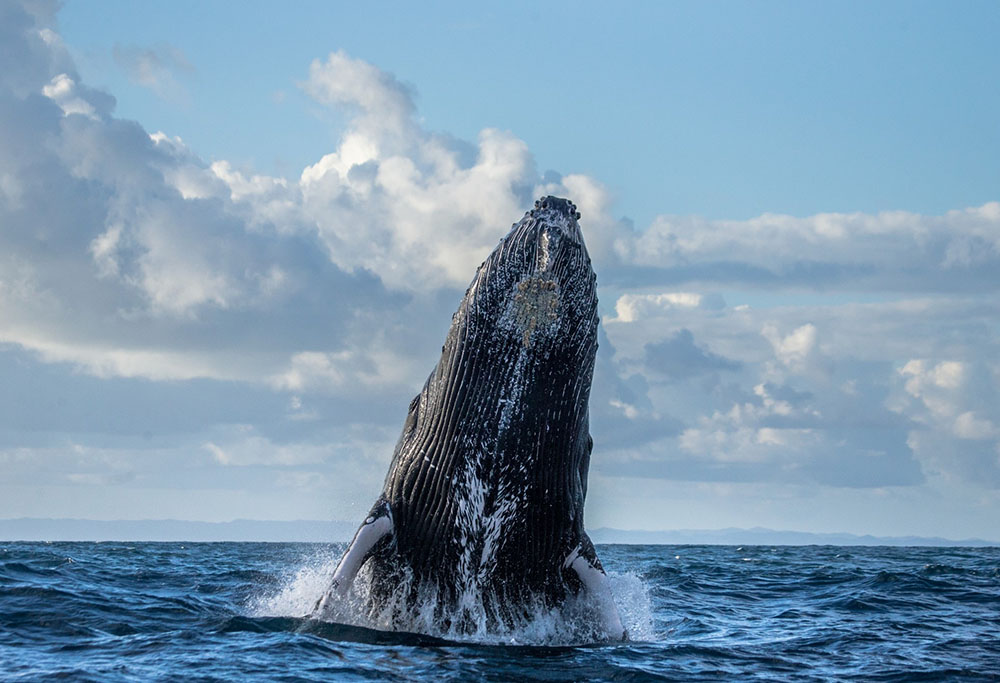The Pearl of the Indian Ocean is tiny yet packs a punch with its diverse wilderness, featuring endemic wildlife, dense jungles, towering peaks, misty hills, gushing rivers, natural lakes, cascading waterfalls, ancient irrigation tanks, historical sites and an endless coastline. The compact landscape means the scenery can shift from scrub forests to cloud forests to lagoons and sun-drenched beaches in hours.
So, if it is vast savannahs, expansive deserts, elephants marching beneath acacia trees and lions stalking gazelles through tall grass you are picturing, let us reveal the Sri Lankan safari experience, which is just as thrilling, yet entirely different!
In this guide, we want to differentiate the Sri Lankan safari experience from the African experience so you know what to look forward to.
Wildlife
The island is considered a biodiversity hotspot with a high degree of endemism. Its varying ecosystems and pristine natural environments have given rise to 26 national parks, 3 of which are marine national parks. There are also 10 nature reserves and 61 sanctuaries. From mammal species to bird species to butterfly species, a rich cornucopia of wildlife awaits safari-goers. Here’s how Sri Lanka’s Big Five stands out from Africa’s.
|
The Big Five |
|
| Africa | Sri Lanka |
| Lion
Leopard Rhinoceros African Elephant African Buffalo |
Asian Elephant toto slot situs toto totoagung toto slot 4d toto slot totoagung2 slot gacor 4d link toto slot qdal88 gacor4d totokita3 amintoto rtp live slot qris slot garansi kekalahan slot mahjong spaceman slot slot gacor hoki slot gampang jp toto slot idn togel toto slot slot thailand slot thailand situs toto situs toto scatter hitam situs toto toto macau toto macau situs slot gacor slot gacor 4d slot thailand slot thailand toto slot toto slot slot gacor maxwin situs toto slot online situs toto slot slot dana slot 4d slot gacor 4d situs toto toto slot toto slot LeopardSloth Bear Blue Whale Sperm Whale |
Did you notice that the Sri Lankan Big Five comprises land-based and marine giants? Sri Lanka is one of the few places on Earth where you can witness both.
Asian Elephant – Distinctively different from their African counterparts, Sri Lanka has the highest density of wild Asian Elephants. The Great Elephant Gathering at Minneriya National Park brings nearly 300 wild elephants to the park in the dry season. This mighty migration brings elephants from nearby national parks through elephant corridors to feed, frolic and bathe in the Minneriya Reservoir, an ancient reservoir built during Sri Lanka’s first kingdom.
You can see elephants in almost every national park and forested area on the island. They are privileged enough to carry the holiest of holy relics in processions, used to fight wars in ancient battles and are a symbol of guardianship. Some are very friendly and even crafty. Have you heard of Raja? https://www.bbc.co.uk/programmes/articles/4V0RPKp4Tvb0tKtsZBzY1rh/elephants-in-sri-lanka
Sri Lankan Leopard – Native to Sri Lanka, this subspecies of leopard is the island’s apex predator. Whereas in Africa, the lion takes the title. Yala National Park has the highest concentration of the island’s recorded leopards. Their russet-tawny coat marked by distinctive black rosettes is considered magnificent. You see them often sprawling on tree branches, always keeping a lookout. While the Sri Lankan leopard roams freely in the jungle due to the absence of other predators, the thick foliage and undergrowth can make them elusive. A keen eye, constant vigilance and binoculars will help you spot them better.
Sri Lankan Sloth Bear – Endemic to Sri Lanka, it is one of the rarest bear species in the world. They are smaller than the average bear, reclusive and shy – more adorable than scary. Best spotted in Wilpattu, Wasgamuwa, Yala and Lunugamvehera, they are easier to spot during the fruiting season when their favourite Palu and Veera fruits are abundant. They also feed on insects and honey, using their snout and long, curved claws.
Blue Whale – The largest animal on Earth can grow as long as a Boeing 737 aeroplane and weigh as much as 33 elephants. Their heart alone can weigh as much as a car. Blue whale sightings are rare and coveted, but in Sri Lanka, they are frequent. Around Sri Lanka, the continental shelf drops off quickly, bringing deep-sea nutrients close to shore, which attracts whales. The krill upwelling zones around the island create rich feeding grounds, allowing blue whales to thrive.
The waters off Mirissa, Trincomalee and Kalpitiya provide ideal conditions with warm temperatures and abundant food. Blue whale sightings in Sri Lanka are only a few kilometres off the coast. You do not have to venture far into the ocean. It makes it one of the most accessible and ethical whale-watching experiences in the world.
Sperm Whale – Posses the largest brain of any animal on Earth and a complex social structure. Their deep-diving abilities take them 9,800 feet into the ocean for their favourite food – giant squid. Sperm whales are extraordinary ocean mammals, and Sri Lanka is one of the few places where you can see superpods of sperm whales. Sri Lanka is also one of the few places in the world where you can see sperm whales and blue whales in the same area.
While typical African safaris are limited to spotting terrestrial animals, Sri Lanka opens up new horizons for terrestrial and marine sightings in relative proximity. Five of the seven endangered sea turtles of the world also favour the island’s coastline.
Types of Safaris
Sri Lanka has been a hidden gem for centuries. Unlike in Africa, safaris are a relatively newer concept here. There is still so much untapped potential and unexplored opportunities to showcase the island’s wildlife. Therefore, jeep safaris are the atypical safari type in Sri Lanka.
While custom-built 4x4s with heavy-duty suspension and raised seating are commonplace on African safaris, Sri Lanka utilises more modest vehicles. Modified jeeps with open roofs and closed sides take visitors into the jungle. The drives are shorter as the landscape is not as expansive. Night safaris do not happen in big parks as they have closing hours. River safaris are limited to Gal Oya National Park. Luxury tented camps offer a glamping experience, and walking safaris are limited to camping site areas. Self-drive safaris, like in Africa, are not available. All safaris need a guide.
Accommodation Facilities
Luxury accommodations, from eco-lodges to glamping sites, are available near game reserves. Sri Lanka is famous for its warm hospitality and does it in style. There are various options to choose from based on your budget. These differ from luxurious lodges and tented camps within private reserves inside African parks. In Sri Lanka, constructions that encroach on wildlife habitats are discouraged. It takes careful effort to preserve wildlife when there’s more of it per hectare.
Trackers and Tracking
Tracking skills and techniques are developed from experience, observation, cultural knowledge and local know-how rather than formal training. The use of technology is uncommon, and guides rely on visual aids and park reports. GPS tracking and radio communication are generally not used. Some trackers have specialist knowledge of elephants and leopards, the biggest of the land animals. There are no armed guides as you find in African national parks since there is no threat from dangerous poachers or predators in Sri Lankan jungles.
Road Conditions
Sri Lanka uses an ecologically responsible approach to infrastructure development in game drives. Therefore, you will find more natural paths and routes, which can get bumpy. These dirt tracks are unpaved and can get dusty in the dry season and muddy in the rainy season. It is essential to trust the guide and their intuition about drives. The road network is less developed than the African safari roads.
Jeeps have been custom-designed for the terrain. Rails are installed in jeeps for support when things can get bouncy. If you have motion sickness, consider taking medication before game drives. Due to narrow tracks, possible flooding or other obstacles, traffic jams can occur, especially in Yala, the most popular national park. However, other less busy national parks are free from high traffic.
Safari Experience: Sri Lanka vs Africa
The Sri Lankan safari experience is more modest, eco-conscious and condensed than the African safari experience. The difference can be stark if you see it as a small island vs a large continent. However, what makes Sri Lanka a worthy safari destination is its diversity, variety and rarity. You may not always spot a leopard, but the jungles make up for it by offering a spectacle of exotic wildlife. The landscape is a mosaic of terrain and colours that roll from scenery to scenery, from grassy plains to thick jungles to wild coasts.
Sri Lanka’s unique position in the Indian Ocean and the landscape offer sightings of terrestrial and marine mammals, sometimes nearby. Due to Sri Lanka’s size and wide range of attractions spread across the country, you can fit other activities and experiences into your safari itinerary. Visitors can experience wholesome and authentic travel that combines wildlife, history, art, adventure sports, wellness and more. We hope this guide offers a snapshot of what to expect on your Sri Lankan safari. If you have any further queries, please do not hesitate to contact us, as we are always happy to give you a clearer idea about the holidays you book with us.





